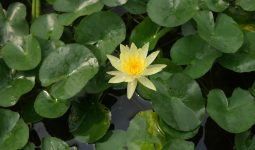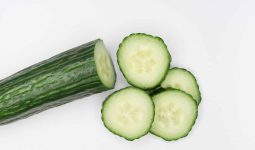The philodendron (or philodenron) houseplant, with its thick, glossy leaves and long vines, is one of the most popular houseplants in the world.
Its popularity comes from the fact that it’s very easy to care for. Plus, it’s resistant to pests, diseases, and other problems that afflict other plants.
If you have experience caring for another houseplant, you can easily transition into caring for a philodendron.
Follow these tips to care for your philodendron houseplant and grow an impressive specimen in your home or office!
Philodendron Houseplant – a Botanical Evaluation
Philodendrons are a genus of tropical and subtropical vines, shrubs, and herbs. The philodendron houseplant is attractive to any household because of its lush green leaves.
It is a family consisting of shrubs, lianas, and herbaceous perennials. They grow in forests throughout Central and South America, Africa, India, Southeast Asia, Australia, and Oceania. There are approximately 920 known species of philodendron.
Furthermore, philodendrons typically have large, glossy, evergreen leaves that are either elliptic or oblong with serrated edges and pointed tips.
Features of this plant include green leaves, succulent stems, wide, heart-shaped leaf blades, and curly hairs on the surface.
Like most plants, it needs sunlight but should not be placed too close to a window as it can dry out easily.
If you live in an area with high humidity, you should mist the philodendron houseplant two times daily.
Different Types of Philodendron Houseplants
Philodendrons are among the most popular houseplants, but they can be tricky.
They come in many shapes and sizes, so it’s important to understand what kind of philodendron houseplant you have before you give it a name.
Birkin Philodendron: Philodendron ‘Birkin’
Philodendrons are one of the most popular houseplants, and there is a reason why. They make a great addition to any home because they require very little care and can tolerate a wide range of light levels.
Bloody Mary Philodendron: Philodendron ‘Bloody Mary’
Philodendron ‘Bloody Mary’ is a tropical plant that originated in Central America. The plant can grow up to four feet tall and has a striking variegated leaf pattern.
Blushing Philodendron: Philodendron Erubescens
Blushing philodendrons need bright, indirect light. Too much direct light can scorch their leaves and cause them to fade.
Brasil Philodendron: Philodendron Hederaceum ‘Brasil’
The Brazilian philodendron houseplant originated in Brazil and was named after the country.
The plant is also known as the elephant ear or gold dust philodendron because of its large, broad leaves that are dark green with a gold sheen.
It can grow up to five feet tall and four feet wide when given ample space.
Fiddle-Leaf Philodendron: Philodendron Bipennifolium
The Fiddle-Leaf Philodendron is a very popular houseplant and can be found in many homes.
King of Philodendrons Philodendron: Philodendron Speciosum
The king of philodendrons is the Philodendron speciosum. It has green and white variegated leaves and can grow up to four feet tall.
When you notice the plant’s leaves are starting to yellow, use a liquid fertilizer at half strength.
How to Develop a Philodendron Houseplant?
Many people like having a houseplant because it adds life and color to their home. You may consider getting a philodendron houseplant if you’re in this category.
These plants are fairly easy to care for and can be grown indoors or outside as long as they are kept at the right temperature. Let’s take a look at how you might go about creating this plant.
Right Soil
Philodendrons are not considered fussy houseplants but require more care than other plants.
One thing that is crucial for a philodendron’s growth and health is the soil it’s planted in.
If you’re not sure what type of soil to plant your philodendron houseplant in, don’t worry! We’ll break down the pros and cons of different options so you can make an informed decision.
As known, there are three main types of soil: clay soils, loamy soils, and sandy soils.
Clay soils are the most popular option because they provide good drainage while retaining moisture, which is ideal for philodendrons.
Loamy soils also provide good drainage but tend to dry out more quickly because of their higher water retention capabilities.
Sandy soil does not retain water well, so it should only be used if you live in a humid climate or want to grow cacti.
Try planting your philodendron in a pot with a high-quality organic potting mix for sandy soil. The best time to repot your philodendron depends on its size.
Smaller ones may need to be repotted once every two years, while larger ones may need repotting yearly.
Repotting will help ensure the roots have enough room to grow and stay healthy.
This is essential since they will eventually fill up whatever space you give them (unless something is blocking them).
It is important to exercise caution when moving around the root system during repotting. Always lift from below by supporting it with both hands—never pull on or tug at any part of the stem or root system.
Proper Sunlight
Philodendrons are very sensitive to light. Although they can be grown in the shade, they will not grow well or bloom if they do not receive sufficient sunlight.
Daily, philodendrons should be given about 6 hours of direct sunlight.
However, if you live in a cold area, it is recommended that you provide them with some light from an artificial source as well.
Since the sun isn’t present during the winter, it is advisable to do so so that your philodendron houseplant can bloom nonetheless.
Proper Watering
Philodendrons are tough plants and can take some neglect. However, they do require more water than other plants.
You should keep the soil wet at all times by watering your philodendron every day or two.
So if the plant is wilting or drooping, it means that it needs more water.
Ensure that when you water, you thoroughly soak the root ball, not letting any excess water run off the pot onto the furniture.
Remember that cold water in the winter will help protect your philodendron houseplant from freezing weather conditions!
Moisture and Temperature Management
The most important thing you can do for your philodendron houseplant is to maintain a moderate moisture level.
Since this plant is native to humid environments, it always needs moist soil.
Again, place a saucer under the pot filled with pebbles and water if you live in an environment with air conditioning or heating.
The water will evaporate through the pebbles and provide needed moisture when it is most needed.
Fertilizing
A healthy philodendron houseplant needs a little fertilizer every few weeks. Use a fertilizer diluted to half the strength recommended by the instructions on the packaging, and water it into the potting soil.
Further, always use fresh, never-been-used water. This will prevent your plant from being killed by salt or other chemical residues.
Be sure not to fertilize too much, which will cause leaf burn and weaken your plant’s root system.
How to Propagate Philodendron Houseplant?
Caring for a philodendron houseplant is relatively simple. Follow these five steps to ensure your plant stays healthy and happy.
- Keep the soil moist but not wet.
- Avoid letting the soil dry out completely between waterings.
- Water in the morning or late evening so that the plant has a chance to dry off overnight. Also, avoid getting it wet from rain or sprinklers during the day.
- Check the potting mix to see if it needs more fertilizer
- Trim any brown leaf tips with sharp pruning shears
Conclusion
Philodendron houseplants are perfect for adding color, texture, and greenery to your home or office.
These tropical plants, which belong to the Araceae family, grow well indoors without natural light in areas that receive indirect sunlight.
Philodendrons, called elephant ear plants, are extremely easy to care for and require minimal attention.
To gardeners worldwide, philodendrons are one of the most resilient plants you can add to your collection.
In addition, philodendrons, a member of the Araceae family, can withstand abuse that would kill other plants and thrive with minimal care.
With many varieties available, one is sure to fit your home or office style, whether an exotic Philodendron bipinnatifidum or a classic Philodendron has Tatum.
Whatever type you choose, here’s everything you need to know about caring for your philodendron houseplant!








